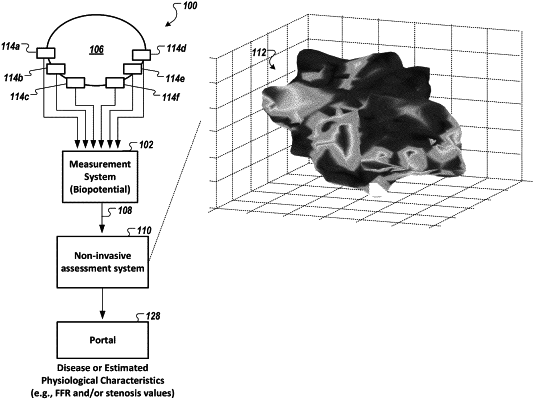| CPC G16H 50/20 (2018.01) [A61B 5/02007 (2013.01); A61B 5/0265 (2013.01); A61B 5/40 (2013.01); A61B 5/726 (2013.01); A61B 5/7282 (2013.01)] | 20 Claims |

|
9. A system comprising:
a processor; and
a memory having instructions thereon, wherein the instructions, when executed by the processor, cause the processor to:
obtain data acquired from a measurement of one or more biopotential signals of a subject, wherein the acquired data comprises a high-frequency time series data having a frequency component greater than about 1 kHz and less than about 10 kHz, wherein the acquired data is derived from measurements acquired via non-invasive equipment configured to measure properties of the heart;
generate one or more phase space volumetric objects based on the acquired data, wherein at least one of the one or more phase space volumetric objects comprises a plurality of faces and a plurality of vertices, wherein the plurality of vertices are determined by subtracting data points of a base-line raw channel data set of the acquired data with corresponding data points of a modeled channel data set, wherein the modeled channel data set is generated from a model-derived reconstruction operation of the acquired data to generate low-energy subspace parameters; and
determine, using a machine-learned based classifier, (i) a parameter associated with a presence, absence, or degree of significant coronary artery disease or (ii) one or more coronary physiological parameters of the subject selected from the group consisting of a fractional flow reserve estimation, a stenosis value, and a myocardial ischemia estimation, based on the generated phase space volumetric object.
|